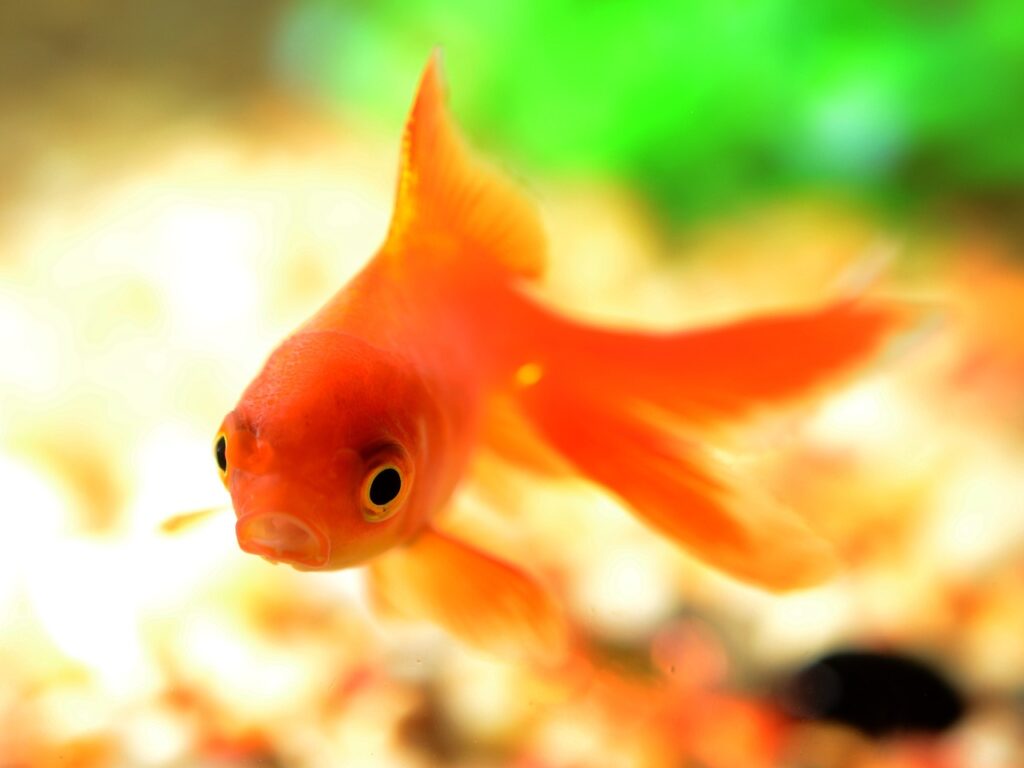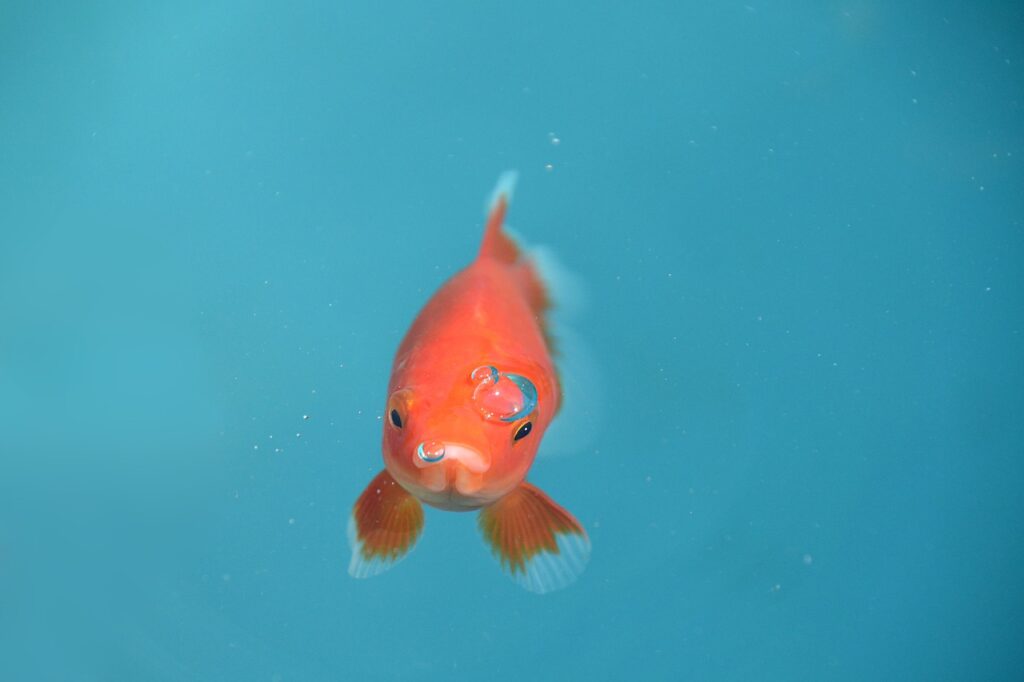Imagine having a picturesque pond in your backyard, complete with colorful and mesmerizing goldfish gracefully gliding through the water. A burning question emerges: can goldfish survive in a pond without a pump, or is it a necessity?
We will explore the fascinating world of goldfish and delve into the possibility of their survival in a natural, pump-less environment. So, let’s uncover the secrets of goldfish resilience!
Introduction
The importance of a pump in a goldfish pond
Goldfish ponds are not only a beautiful addition to any outdoor space but also provide a thriving habitat for goldfish. These ponds require careful and regular maintenance to ensure the health and survival of the goldfish population. One crucial element in pond maintenance is the use of a pump. The pump plays a vital role in maintaining optimal conditions for the goldfish, ensuring their survival and overall well-being.
Can goldfish survive without a pump?
While goldfish are known for their ability to adapt to various environments, their survival in a pond without a pump can be challenging. Without the constant circulation and filtration provided by a pump, the pond’s ecosystem can quickly become imbalanced, leading to adverse effects on the goldfish. It is not impossible for goldfish to survive in a pumpless pond, but their chances of thriving and living a long, healthy life are significantly reduced.
Factors that affect goldfish survival in a pond without a pump
Several factors come into play when assessing goldfish survival in a pond without a pump. These factors include oxygen levels, filtration, water circulation, waste management, temperature regulation, algae control, disease prevention, and aesthetic considerations. Each of these elements contributes to the overall health and well-being of the goldfish and necessitates careful consideration when deciding whether or not to use a pump in the pond.
1. Oxygen Levels
The role of a pump in maintaining oxygen levels
A pump is instrumental in maintaining adequate oxygen levels in a goldfish pond. It accomplishes this by circulating the water, allowing for oxygen exchange to occur between the air and water surfaces. By constantly circulating the water, the pump ensures that oxygen is distributed evenly throughout the pond, providing the goldfish with the oxygen they need to survive.
Effects of low oxygen levels on goldfish
In a pond without a pump, oxygen levels can quickly deplete, leading to oxygen deprivation in the goldfish. Low oxygen levels can result in increased stress, reduced immune function, and even death in severe cases. Goldfish may exhibit lethargy, gasping at the water surface, or erratic swimming when oxygen levels are insufficient. Without a pump to maintain oxygen levels, the chances of goldfish survival are significantly diminished.
Alternatives for increasing oxygen in a pond without a pump
While a pump is the most efficient way to maintain optimal oxygen levels in a goldfish pond, alternative methods can be employed in the absence of a pump. Adding aquatic plants, such as water lilies or water hyacinths, can help oxygenate the water during daylight hours through photosynthesis. Another option is to install a small fountain or waterfall, which can introduce air into the water through splashing and cascading effects. However, it’s important to note that these alternatives may not provide the same level of oxygenation as a pump.

2. Filtration
Benefits of filtration in a goldfish pond
Filtration plays a critical role in maintaining water quality in a goldfish pond. It helps remove debris, excess nutrients, and harmful substances from the water, ensuring a healthy environment for the goldfish. A pump with an appropriate filter efficiently removes solid waste, prevents the accumulation of harmful chemicals, and promotes the growth of beneficial bacteria that aid in organic waste breakdown.
The impact of no filtration on water quality
In the absence of filtration, water quality in a goldfish pond can quickly decline. Accumulated debris and waste can lead to toxin build-up and nutrient imbalances, creating an unfavorable environment for the goldfish. Poor water quality can result in stressed and unhealthy goldfish, making them more susceptible to diseases and potentially shortening their lifespan.
Natural alternatives for filtration
While a pump provides optimal filtration for a goldfish pond, natural alternatives can still help improve water quality. Incorporating aquatic plants, such as watercress or duckweed, can act as natural filters, absorbing excess nutrients and helping to maintain a balanced ecosystem. Additionally, introducing beneficial bacteria into the pond through commercially available products can aid in organic waste breakdown and nutrient control. Although these natural alternatives may not replace the efficiency of a pump, they can still contribute to improving water quality in a pumpless pond.
3. Water Circulation
The importance of water circulation
Water circulation is crucial for goldfish ponds as it helps distribute oxygen, nutrients, and beneficial bacteria throughout the pond. It also prevents stagnant water conditions that can lead to the accumulation of waste and the growth of harmful bacteria. Proper water circulation ensures the overall health and well-being of the goldfish by keeping the water fresh and facilitating optimal pond conditions.
Effects of stagnant water on goldfish
In a pond without water circulation, stagnant conditions can arise, creating an array of issues for the goldfish. Stagnant water promotes the growth of harmful bacteria and algae, increases the risk of disease, and impedes the overall health of the goldfish. Additionally, stagnant water can create stratification, where the water layers separate based on temperature and oxygen content, leading to further imbalances in the pond’s ecosystem.
Methods to promote water circulation without a pump
In the absence of a pump, several methods can be employed to promote water circulation in a goldfish pond. Installing a surface aerator or a floating fountain can generate movement at the water’s surface, enhancing oxygen exchange and preventing stagnation. Additionally, strategically placing decorative elements, such as rocks or ornaments, can create natural flow patterns within the pond. However, it’s crucial to recognize that these alternative methods may not provide the same level of circulation as a pump.

4. Waste Management
How a pump aids in waste removal
A pump is essential for effective waste management in a goldfish pond. By constantly circulating the water, a pump helps prevent waste from settling at the bottom of the pond, where it can accumulate and release harmful toxins. It also facilitates the movement of waste towards the filter, where it can be efficiently removed, thus maintaining a clean and healthy environment for the goldfish.
Issues associated with waste build-up in a pond without a pump
In the absence of a pump, waste can accumulate at the bottom of the pond, leading to numerous issues. Excessive waste build-up can release harmful gases, decrease water quality, and create an environment that promotes the growth of harmful bacteria. This can result in stressed and unhealthy goldfish, making them more susceptible to diseases and compromising their overall well-being.
Strategies for managing waste in the absence of a pump
While managing waste without a pump may be challenging, several strategies can help minimize its impact on the goldfish pond. Regular manual removal of debris and waste from the pond using a net can limit the amount of waste that accumulates. Additionally, introducing bottom-dwelling fish species, like plecos or catfish, can aid in waste breakdown and removal. Employing a combination of these strategies can help mitigate the negative effects of waste build-up in a pumpless pond.
5. Temperature Regulation
Pump’s role in maintaining consistent temperature
A pump plays a vital role in temperature regulation in a goldfish pond. By constantly circulating the water, it helps distribute heat evenly throughout the pond, preventing temperature fluctuations. This is particularly important during hot summer months or cold winters when extreme temperatures can negatively impact the goldfish.
Temperature fluctuations in a pond without a pump
In the absence of a pump, temperature fluctuations in a goldfish pond can be significant. Without proper circulation, warm surface water and cool bottom water can lead to stratification, where distinct layers of water form with varying temperatures. This can result in stress, limited oxygen availability, and potentially harmful temperature extremes for the goldfish.
Techniques to regulate temperature without a pump
While a pump is the most effective way to regulate temperature in a goldfish pond, alternative methods can help mitigate temperature fluctuations. Providing ample shade through the use of floating aquatic plants or strategically placed features, such as umbrellas or pergolas, can help shield the pond from direct sunlight, preventing water from heating up too quickly. In colder climates, using de-icers or floating heaters can prevent the formation of ice and maintain a suitable temperature for the goldfish. However, it’s important to note that these techniques may not provide the same level of temperature control as a pump.

6. Algae Control
The impact of a pump on algae growth
A pump is instrumental in controlling algae growth in a goldfish pond. By circulating the water and adding oxygen, a pump helps maintain a balanced ecosystem that discourages the proliferation of algae. Algae growth can be unsightly and potentially detrimental to the goldfish’s health, as excessive algae can deplete oxygen levels, disrupt water parameters, and promote the growth of harmful bacteria.
Algae overgrowth in a pond without a pump
In the absence of a pump, algae can quickly overgrow in a goldfish pond, compromising its aesthetic appeal and endangering the goldfish. Without proper circulation, the stagnant water becomes a breeding ground for algae, resulting in murky and greenish water. Algae overgrowth can create an imbalanced ecosystem, leading to poor water quality and increased stress for the goldfish.
Methods to control algae without a pump
While a pump is the most effective method to control algae, alternative techniques can help manage algae growth in a pumpless pond. Introducing certain aquatic plants, such as water hyacinths or water ferns, can help shade the water surface, limiting sunlight availability and impeding algae growth.
Additionally, implementing a regular maintenance routine, including manual removal of excess algae and using a pond vacuum to clean the bottom, can minimize algae presence. These methods may provide some control over algae growth but may not entirely replace the efficiency of a pump.
7. Disease Prevention
How a pump contributes to disease prevention
A pump plays a significant role in disease prevention in a goldfish pond. By maintaining optimal water conditions, including oxygenation, filtration, and waste removal, a pump helps create an environment that discourages the growth and spread of harmful bacteria and parasites. Disease prevention is critical for the long-term health and well-being of the goldfish population.
Heightened disease risks in a pond without a pump
In a pond without a pump, the likelihood of diseases affecting the goldfish increases significantly. Stagnant water, poor water quality, and waste accumulation create an environment conducive to bacterial and parasitic growth. In such conditions, goldfish are more vulnerable to infections, parasites, and other ailments, resulting in reduced lifespans and compromised overall health.
Measures to prevent diseases in the absence of a pump
While a pump is the primary tool in disease prevention, several measures can help minimize disease risks in a pumpless pond. Regular and thorough water testing can help identify any imbalances or abnormalities in water parameters, alerting the pond owner to potential disease risks. Quarantining new fish before introducing them into the pond can prevent the introduction of pathogens.
Additionally, ensuring proper nutrition, minimal stress, and prompt treatment of any signs of illness can contribute to disease prevention. Although these measures can help mitigate risks, the absence of a pump may still make disease prevention more challenging.
8. Aesthetic Considerations
The visual appeal of a pond with a pump
A goldfish pond with a pump offers several aesthetic benefits. The circulation and movement of water provided by a pump create a dynamic and visually pleasing element in the pond. The sound of flowing water enhances the overall ambiance, creating a soothing and tranquil atmosphere. Additionally, a pump contributes to maintaining clear water, showcasing the goldfish and other pond elements in their full splendor.
Impact on aesthetics when a pump is absent
In a pond without a pump, the aesthetic appeal may be compromised. Stagnant water can become murky and cloudy, diminishing visibility and obscuring the goldfish from view. Algae overgrowth can also create an unappealing appearance, as the water can turn green and unsightly. The absence of water circulation and the soothing sound of flowing water can also detract from the overall ambiance of the pond.
Enhancing the visual appeal of a pond without a pump
Although the absence of a pump can affect the aesthetic appeal of a goldfish pond, there are still ways to enhance its visual appeal. Regular cleaning and maintenance, such as removing debris and excess algae, can help improve water clarity and cleanliness. Creating natural flow patterns with rocks or strategically placed plants can also contribute to a more visually pleasing pond. Additionally, incorporating other water features, such as decorative fountains or waterfalls, can introduce movement and sound to compensate for the lack of a pump.
Can Goldfish Survive In A Pond Without A pump?
Summary of key points
A pump plays a vital role in maintaining a healthy and balanced environment for goldfish in a pond. Its contributions include ensuring optimal oxygen levels, efficient filtration, proper water circulation, effective waste management, consistent temperature regulation, algae control, disease prevention, and enhancing the aesthetic appeal of the pond.
Recommendations for goldfish pond management
Based on the factors discussed, it is recommended to use a pump in a goldfish pond for optimal goldfish survival and overall pond health. The pump provides numerous advantages, including improved oxygenation, enhanced water quality, disease prevention, and aesthetic appeal.
However, if a pump cannot be used, alternative methods can partially compensate for the absence of a pump, such as incorporating natural filters, promoting water movement, actively managing waste, regulating temperature, controlling algae growth, and implementing disease prevention measures.
The ultimate decision: pump or no pump?
Ultimately, the decision to use a pump in a goldfish pond depends on individual circumstances, such as pond size, available resources, and personal preferences. While goldfish can survive in a pond without a pump, their chances of thriving and living a long, healthy life are significantly increased with the use of a pump. Therefore, it is highly recommended to include a pump in the design and maintenance of a goldfish pond to ensure the best possible conditions for the goldfish’s overall well-being.
